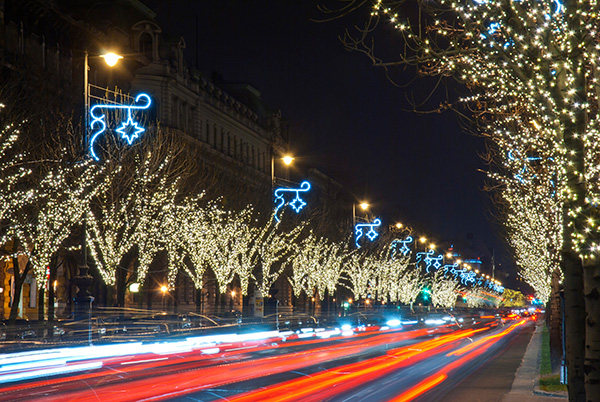
Holiday traffic looks like a parking lot with turn signals. Engines idle longer, brakes work harder, and drivers make faster decisions with less space. A little preparation and a few smart habits keep the car calm and give you a wider safety margin when the lanes fill up.
The Hidden Load of Stop-and-Go
Every crawl from zero to 10 mph puts heat into the engine, transmission, and brakes. Short bursts of throttle followed by quick braking also magnify small issues like weak coils, uneven tires, or a sticky caliper. We often see minor drivability quirks become obvious only when traffic is dense and speeds never stabilize.
Heat, Idling, and Fuel Economy
Idling with the heater, defroster, and lights on raises electrical and cooling demands. If a cooling fan is weak or the condenser and radiator face are clogged, coolant temperature can creep up in traffic even on a cool day. Automatic transmissions also run warmer during repeated launches. Fresh oil, correct coolant mix, and a clean condenser help temps stay steady and save fuel when the highway turns into a crawl.
Braking Distance Shrinks in Crowds
Close gaps feel efficient, but they erase reaction time. Glazed pads and old brake fluid show up here first as a hard pedal with longer stopping distances. ABS can only manage traction that the tires provide, so tread depth and correct pressure matter more during slow, repeated stops than on open roads. If the wheel shakes lightly on gentle braking from 45 to 25 mph, plan a brake check before the big drive.
Steering, Alignment, and Lane Changes
Constant lane shifts load the front suspension and can reveal play in tie rods or control arm bushings. A slight pull or off-center steering wheel becomes tiring when you change lanes every few minutes. Uneven front tire wear and low pressures also make the car wander, which encourages more corrections and raises risk. A quick pressure set and an alignment check pay off here with a calmer wheel and straighter tracking.
Dashboard Warnings You Should Not Ignore
A steady check engine light with no symptoms can often wait for the end of the trip. A flashing light, overheating warning, charging light, or brake warning is different. Those ask for a safe stop and a plan before continuing. Our technicians see many holiday tow calls that began as “just one more exit” after a flashing light or hot smell in gridlock.
Quick Checks Before You Join the Rush
- Set tire pressures using the values on the door label and confirm at least 4/32 inch tread on the tires left.
- Verify brake fluid level and color; a dark, brown fluid is due for service.
- Check coolant in the reservoir when the engine is cold and inspect for debris on the condenser and radiator.
- Test all exterior lights and clean the inside of the windshield to reduce night glare.
- Listen for belt squeal at idle with the A/C on; a slipping belt can cascade into charging and cooling problems.
- Bring a small kit: phone charger, microfiber for glass, and a snack and water so you are not forced into risky last-second exits.
When a Pre-Trip Inspection Makes Sense
Book a quick check if the engine hesitates in the first minute of driving, the wheel drifts on flat roads, the pedal pulses, or the battery is three years old or more. Short, targeted service keeps small faults from growing inside heavy traffic. We can measure pad thickness, set pressures, read battery health, and look for cooling and belt issues in one short visit, so the car helps you, not the other way around.
Get Holiday Traffic Safety Prep in Richardson, TX with Kwik Kar Auto Repair
Headed into the holiday rush? Visit Kwik Kar Auto Repair in Richardson, TX. We will inspect brakes and tires, set alignment and pressures, test battery and charging health, and confirm cooling and cabin heat are working the way they should.
Schedule a pre-trip check today. We will get you road-ready so stop-and-go miles feel steady, quiet, and safe.